“I work in a wide range of media, which include installation, sound, video, photography, printmaking and drawing.
The starting point for most of my recent work has been the question of what we remember and how and why we remember it. Specifically, I am interested in what certain public accounts of the past — of people, places and histories that a particular social group considers ‘distant’ — might reveal about that group’s values and beliefs. In my practice, I try to explore the ways in which these kinds of accounts are constructed, and to trace the knowledges and the histories that may have been suppressed during this process.
I am currently investigating how social, economic and political change is not only reflected in the collective memory in Uganda, but is also affecting the processes and technologies of remembering itself. Of particular interest to me in the country’s 50th anniversary year is the status of the colonial legacy.”
Emma Wolukau-Wanambwa will exhibit outside Makerere Art Gallery/IHCR.
Emma Wolukau-Wanambwa is an artist of Ugandan origin who was born in the United Kingdom. Her art works are realised in a wide range of media including installation, sound, video, photography, printmaking and drawing.
In 1998 Emma graduated with a Bachelors degree in English Literature from Cambridge University and in 2008 completed a Masters degree in Fine Art at the Slade School of Fine Art, University College London. Currently Emma is a Fine Art Researcher at the Jan van Eyck Academie in Maastricht, Netherlands and an Honorary Research Associate of the Slade School of Fine Art. Recent exhibitions and screenings include ‘km 500’ at Kunsthalle Mainz, Germany, ‘Chewing The Scenery’ at the Swiss Off-Site Pavilion at the 54th Venice Biennale, ‘Nothing Personal’ at Marcelle Alix in Paris, ‘Públicos y Contrapúblicos’ at Centro Andaluz de Arte Contemporaneo in Seville, Spain, and ‘Whose Map Is It? New Mapping by Artists’ at Iniva – Institute of International Visual Art in London.
Paradise
‘Paradise’ is a piece of work that has emerged from Emma’s ongoing project ‘Of Houses and Death’ a 5-year artistic investigation into the changing relationship between the land, the building and the body in contemporary Uganda. The core consideration for this research project lies in the politics of remembering and representation.
‘Paradise’ focuses on a former Polish refugee camp in Kojja, located 100km east of Kampala on the shores of Lake Victoria. The site covers an area of 700 acres and functioned as a camp for Polish World War II refugees from 1941 to 1952. Some seven thousand Polish and Ukrainian refugees were living in the Uganda Protectorate, at a time when the resident European population was only two thousand. The British managed this by giving the refugees very restricted egress, keeping them almost entirely cut off from the local population. After the camp at Kojja was closed in 1952, it was entirely dismantled. All that remains of the settlement today is a reconstruction of the cemetery. There are barely any records left that remember the place and the people that lived there. In this way Kojja represents a disappeared aspect of recent Ugandan history and functions as an interesting case study for those kind of events that, for various reasons, never acquire a status within the master narrative.
The work is partly composed of recent photographs of the former refugee camp presented in light boxes inside the container. Applying a minimal approach in terms of exhibition objects the installation focuses on small details such as facing the entrance to the wall, the opposite direction one would expect, which extends the duration of entering the container and creates a more intimate inside space. The position of the doors of the container also breaks with the alignment of the entrance of its neighbouring building and in this way sets it apart and “makes it something other”, as Emma phrases it. ‘Paradise’ is located at the Margaret Trowell School of Industrial and Fine Arts, Makerere University and, as Emma’s practice is very much research based, fits well within the academic context of its location.
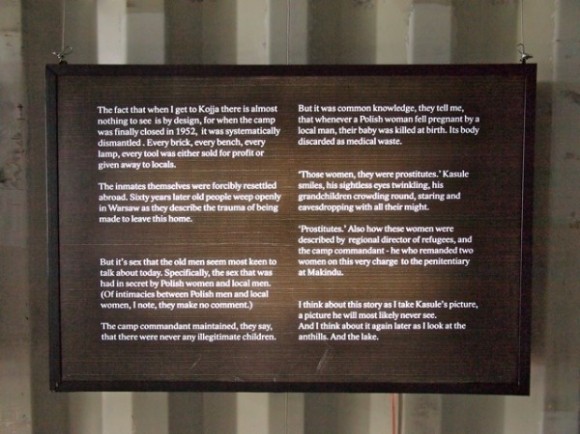
Artwork by Emma Wolukau-Wanambwa for KLA ART 012. All rights reserved, 2012. (Photo by Thomas Bjørnskau)
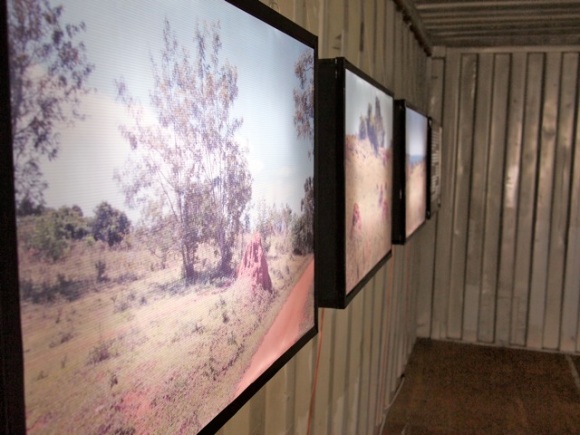
Artwork by Emma Wolukau-Wanambwa for KLA ART 012. All rights reserved, 2012. (Photo by Thomas Bjørnskau)

Artwork by Emma Wolukau-Wanambwa for KLA ART 012. All rights reserved, 2012. (Photo by Thomas Bjørnskau)


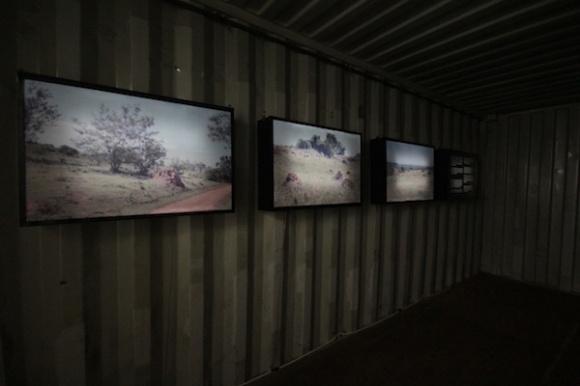
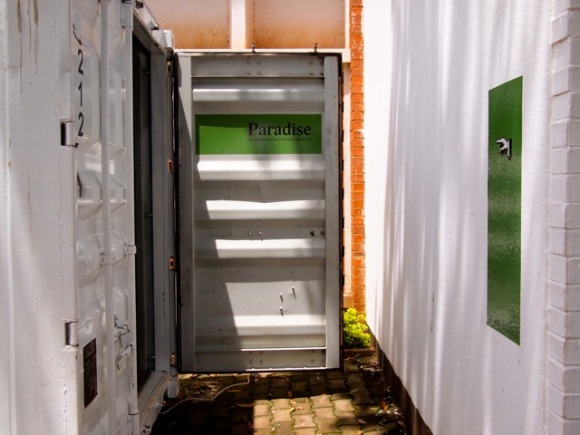
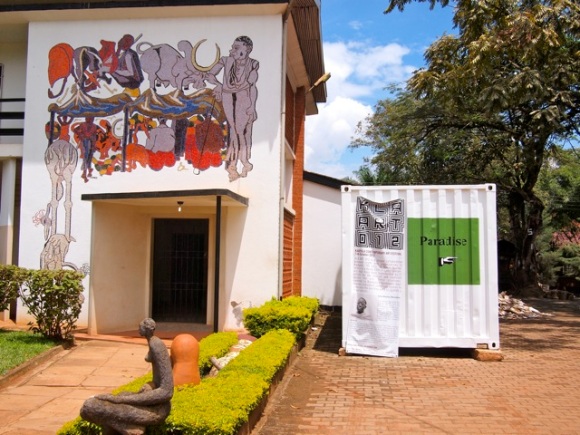
Your really Awesome Emma just keep it up. Say Brenda